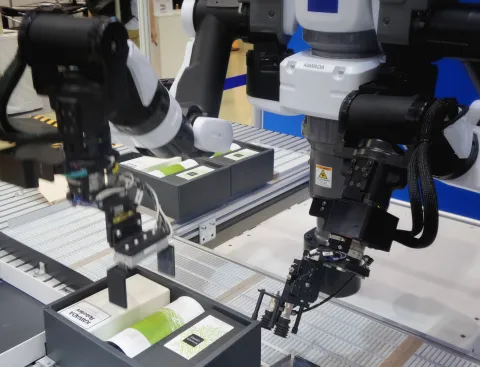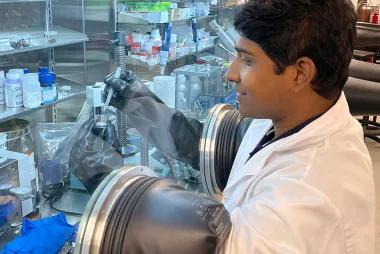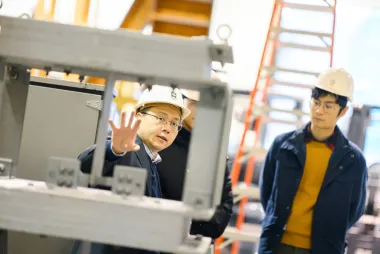UBC-Fraunhofer Collaboration agreement in industrial digital transformation
The UBC Faculty of Applied Science and the Fraunhofer’s Institute for Experimental Software Engineering and Institute for Machine Tools and Forming Technology have set up a framework for research collaboration in the field of industrial digital transformation. The focus of the collaboration is on the digitalization of machines, processes, infrastructure and ultimately, the digital transformation of organizations and businesses in the manufacturing industry.

North America has traditionally been strong in manufacturing, but there are still research and development gaps in production and manufacturing supply chains. With digital technologies in all areas of our lives and economies, German and North American digital industries can capitalize on significant market opportunities on both sides of the Atlantic. Combining complementary approaches to digital transformations in North America and Europe can enable joint research and enhance development capabilities.
The collaboration will focus on service offerings in the domain of industrial digital transformation. Initially, these will be services enabled by providing holistic digital twins of assets of different manufacturing domains, such as machining, wood processing and mining. In order to stay flexible in reacting to the market and to client demands, the overall service portfolio offered by the collaboration will address various segments of the value chain including licensing, but also design and development services, prototyping, proof of concept, testing, validation, standardization and other custom-tailored solutions.

North America has traditionally been strong in manufacturing, but there are still research and development gaps in production and manufacturing supply chains. Photo by Lenny Kuhne on Upsplash.
“The development of the Industry 4.0 middleware Eclipse BaSyx, which is coordinated by Fraunhofer IESE, will benefit from the cooperation with UBC and Fraunhofer IWU,” said Professor Liggesmeyer, Director of Fraunhofer Institute for Experimental Software Engineering. “I expect that the combination of the BaSyx system with the process simulation models developed at UBC in the area of machine tools and with the wear models and thermal models of Fraunhofer IWU will enable a significant increase in the quality of production processes.”
“The collaboration will give us the opportunity to enhance our digital machine twins with plug and produce software solutions developed by UBC,” said Professor Ihlenfeldt, Director of Fraunhofer Institute for Machine Tools and Forming Technology IWU. “With the additional inclusion of the Eclipse BaSyx middleware from IESE, we’re able to open currently only locally accessible optimization tools for their integration into production planning tools and in agile matrix production scenarios. By that, the collaboration with UBC and IESE will cover the whole value chain in production from the machine level all up to logistic resource and task allocation.”

The collaboration combines the expertise and resources of the three renowned research entities. Photo by Simon Kadula on Upsplash.
“This research framework provides an effective platform to build on more than 10 years of UBC-Fraunhofer cooperation,” said Dr. Walter Mérida, Associate Dean, Research and Industry Partnerships, for the UBC Faculty of Applied Science. “As cities and technologies become smart and inter-connected, we can consider moving beyond net-zero by providing net-positive services in a low-carbon economy,” he added.
Within the UBC Faculty of Applied Science, the collaboration is being supported by the Manufacturing Automation Laboratory (under the leadership of Prof. Yusuf Altintas), the Department of Mechanical Engineering, the Bradshaw Research Initiative for Minerals and Mining, and the Institute for Computing, Information and Cognitive Systems. The initial five-year collaboration has a total budget of $6.67 million including contributions from UBC, Fraunhofer and industry partners.


